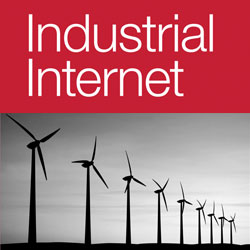The good thing about the Internet of Things is that it will give us unprecedented amounts of real-time data: IMS Research predicts the “… more than 22 billion web-connected devices by 2020… will generate more than 2.5 quintillion bytes of new data every day.”
The bad thing about the Internet of Things is that it will give us unprecedented amounts of real-time data: how can we possibly process it, let alone reduce it to manageable, intelligible (remember the “Wisdom Pyramid?” — just accumulating data isn’t the goal: it’s turning it into actionable wisdom) information?
Now IBM has introduced a critical tool to help deal with that volume of data: the MessageSight appliance.
It uses another important new breakthrough, the Message Queuing Telemetry Transport (MQTT), the proposed lightweight open standard for M2M communication (more about that in a future post).
MessageSight is designed specifically to handle the explosion in mobile computing devices. It can support one million concurrent sensors or smart devices and can scale up to thirteen million messages per second. Wow!
“’When we launched our Smarter Planet strategy nearly five years ago, our strategic belief was that the world was going to be profoundly changed as it became more instrumented, interconnected and intelligent. IBM MessageSight is a major technological step forward in continuing that strategy,’ said Marie Wieck, general manager, WebSphere, IBM. ‘Until now, no technology has been able to handle this volume of messages and devices. What’s even more exciting is that this only scratches the surface of what’s to come as we continue down this path of a Smarter Planet.’”
IBM cites a possible application in the auto industry:
“For instance, an automotive manufacturer can use IBM MessageSight to help manage the features and services of its automobiles. With thousands of sensors in each car, a dealer can now be notified when a ‘check engine’ light turns on in a specific car. Based on the information transmitted by the engine sensor, the dealer could then notify the owner that there is a critical problem and they should get their car serviced immediately.”
MessageSight is part of IBM’s MobileFirst package of mobile enterprise software, services, cloud and analytics capabilities. The company claims:
“IBM’s MobileFirst platform is the first in the industry to speed the process of building apps by enabling companies to seamlessly integrate analytics and capture the complete on-device experience of how customers are using apps, including insight into gestures, dwell time and navigation.”
Among its features, MobileFirst now offers geo-location services: “geo-location triggers can be used to extend applications to take contextual action based on a user’s location to provide personalized service.” It also offers cloud services for mobile.
“According to IDC, the market for mobile enterprise infrastructure software and services was $14.5 billion in 2012, growing at a compound annual growth rate of 16.3%. IDC expects this market to reach $30.9 billion in 2016.”
I’ve long believed that IBM is THE leader in the Internet of Things, particularly given the tangible results its Smarter Cities programs have achieved (BTW, regarding my post yesterday about government getting up-to-speed on the IoT, the Obama Administration would do well to look at Smarter Cities as an operating manual…). MessageSight should cement that lead in the technology field!
 with 2.4GHz connectivity using the 802.15.4 wireless standard. Web connectivity is available using a WiFi shield.”
with 2.4GHz connectivity using the 802.15.4 wireless standard. Web connectivity is available using a WiFi shield.” the post I just checked out the
the post I just checked out the 

